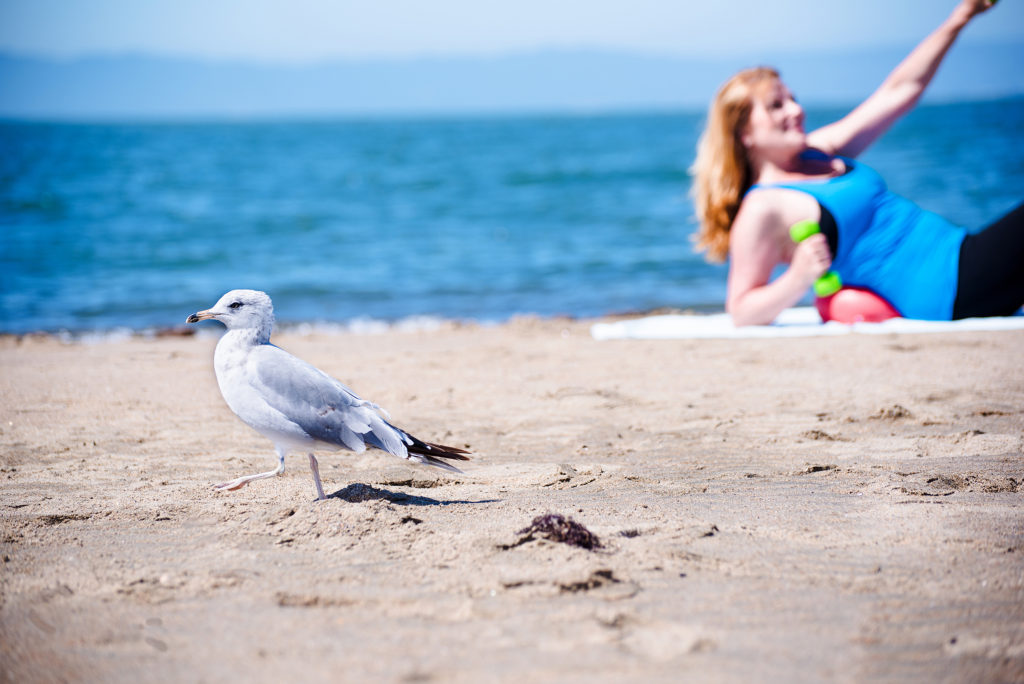
One of my first fitness jobs in the early 90’s was teaching water and land aerobics at a small fitness center along the coast of Northern California. It was at that job that I witnessed first hand the seriousness of heat-related illness and what can happen when you get dehydrated and develop heat stroke.
A member of our water aerobics class had started off the day with two large cups of caffeinated tea, gone for a power walk, and then participated in the water class for an hour. The pool temperature for water aerobics classes is usually pretty warm and runs about 82 degrees. The tea was the only liquid she had consumed that day. After the class, she passed out in the parking lot on her way to her car while suffering from heat stroke. Fortunately, we responded immediately and she recovered fully from the incident.
The warm weather has definitely arrived and with it comes summer fun and a wide variety of outdoor activities. Whether you are working out or enjoying the warmer temperatures at a leisurely pace, it’s important to take the proper steps to keep yourself and the ones you love safe from heat-related illnesses.
Here are eight tips for exercising when it’s hot out:
- Be flexible about when you exercise or move outdoors. Check the weather and find out when temps are going to be the lowest that day. Sometimes it’s early in the morning and sometimes it’s late in the evening so you’ll want to rearrange your schedule to fit in exercise and/or outdoor chores during the coolest time of day. I’m constantly checking the weather to determine a safe time to walk our dogs and sometimes it requires me to rearrange my day a bit. Seasonal adjustments are normal so give yourself a break if you miss your workout or have to skip a dog walk or chore.
- Invest in comfortable clothes and sunscreen: Lightweight, breathable clothes make a huge difference and will help you feel cooler. Wearing a hat to keep the hot sun off your head and face also helps. Apply sunscreen to keep the sun from burning your skin.
- Take a cold shower: It may seem weird to shower before you sweat, but the cold water will cool you down. Leave your hair wet and pop it in a bun, so when you head outside water dripping down your face and neck will feel so refreshing. If you have short hair, carry a water bottle with you and squeeze a little on top of your head whenever you need a little cooling boost.
- Exercise in cooler places: Head for trails in shady areas or along a breezy beach shoreline. We live on a small island and it can be 10 degrees cooler when I take the dogs over to the beach shoreline.
- Slow down your pace: If you’re set on getting in a workout, move with less intensity and remember, it’s OK to take breaks or stop altogether. Summertime isn’t the best time to push yourself so if you can only handle 10 minutes at a time, that’s good enough. Exercise is supposed to improve your health, not harm it.
- Head indoors: If your home is air conditioned, you may want to take your exercise indoors. A strength routine, stair workout, or mini trampoline session are all great ways to get your muscles moving and heart rate up while keeping it safe indoors. If you don’t have A/C now may be a good time to take advantage of that class you’ve always wanted to try at an air-conditioned studio or gym. As much as people joke about it, heading to your local air conditioned mall and power-walking is safe and window-shopping helps you pass the time.
- Drink water all day: Drink plenty of water even if you do not feel thirsty. Sip four to eight ounces of water every 15 to 20 minutes while performing physical activities and drink water steadily throughout the day. Drink extra water while swimming or wading in water. Oftentimes, we forget to drink water because being in it makes us feel cool. However, you tend to perspire more in the water on hot days or while exercising because the water continues to wipe away your sweat which can lead to excess water loss.
- Pass the salt: On hot days you can lose excess salt along with other important nutrients, such as potassium, calcium, and magnesium. Snack on a variety of fruits and vegetables throughout the day to keep your sodium levels up. If you find yourself craving salty snacks in the heat, it may be a sign that you’re losing sodium so honor that and eat foods with salt. Pickled veggies, tomato juice, or your favorite chips or crackers can all help raise sodium levels and help you stay hydrated.
When the temperatures rise one of the most important things you can do is listen to your body. Stop any activity immediately if you’re feeling dizzy, faint or nauseous. And if the symptoms do not improve, call for emergency services or head to your nearest emergency room.
Here’s to a happy, fun, and safe summer!
Shared with love,
Jennifer

